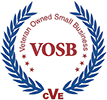
Where to begin the conversation
How can we focus buyers’ attention on your Value or Unique Selling Propositions (USP) and nurture them with your messages during the buying cycle? We must not only tell the story, we must create tension by using some fear, uncertainty and doubt (FUD) to question the status quo. It is different for each buyer persona. Economic buyers, especially in the executive suite, want to balance risk with opportunity. Technical buyers do not want to be left behind. User buyers do not want to be overwhelmed by their present situations when the business scales up.
Reflect on your mission statement. It should give you a reason to initiate the contact and answers these questions:
- Why do we exist?(e.g. Our company leads and supports financial institutions to the next generation of customer interaction.)? Our mission is clear. How do we lead and support?
- Why it that important to our customers (e.g. Our ongoing knowledge of what consumers demand and businesses need to compete in a dynamic marketplace help them transform their institutions.)? In other words, what do we know that no one else does and is important to executives, technical staff and users of our systems?
Let’s address ‘Why change?’
How can we challenge current assumptions, and make a compelling business case to proceed? Let’s start with an opening statement to distill your disruptive business model or offering into a script for economic, technical, user and coach influencers (e.g. Competition is moving in and costs are rising to branch out – the current model is no longer sustainable. Your equipment will no longer be affordable to service or reliable to use within two years. Consumers, who struggle to enter transactions using the new systems, will go to your competitors).
Your USP addresses ‘Why choose you?’
Your prepared value proposition, or USP should differentiate your firm for the offering that your buyer needs. Did you isolate their selection criteria or educate them to use yours? We have to show a match of your abilities to their needs. Let’s tell that as a success story and find out if it applies. If you have made an emotional connection, have you related it back to the buyer? Did you fish with the story (… at XYZ, they were having problems with A, B and C. does that relate here?)?
Position your value proposition
Once you have helped the buyer envision the changed state of affairs based on your solution. Have you made it personal to the buyer? Did you show, tell, demonstrate and/or paint a vivid picture of what’s in it for me (WII-FM)? The more resistant a buyer is to change, the deeper you need to understand which motivations to appeal to. This is where the features, benefits and advantages come in, as well as the elements of FUD (e.g. We helped reduced transaction time at drive-up teller/tube service by… because our machines perform routine check imaging and cash counting functions.). What would things be like here if we could help your institution achieve similar results? WII-FM (e.g. how would that affect your role?)?
Tell your story
Let’s identify who needs to be convinced by it, first. Do your features, benefits and advantages or FUD resonate with that buyer persona?
Story structure is simple (e.g. Before… We came along and… Then, they prospered happily ever after because…).
Now, where do we pitch our story (e.g. on a sales call, handout at a tradeshow, presentation, as a download from your website, blog page or newsy e-mail)? If all apply, remember to adjust the format and content to take advantage of each media. See Touch Points in the Buying Cycle to Enable Sales Reps for a list of all interactions that may need content, especially executives and board members.
Continue branding for all buyer personas
We still need literature or collateral for other buyer personas. You can take snippets of testimonials, USPs and graphics and parse them among more technical pieces to reinforce the message and continue the branding. Your clients and vendors will be glad to see that you honored them.
Develop and repurpose content to a schedule
If all of this may seem a bit overwhelming, realize that you do not have to do it all at once. Creating a marketing communications plan and editorial schedule will help you focus on content that is needed, when it is needed. Keep in mind that once you have a library of marketing communications, you can easily adapt them for every market segment following your established branding guidelines.
Should you need help with your planning or content development, contact us for information about our Marketing Planning and Marketing Communication Workshops.
In the next blog, we will focus how to take your newly created marketing communications and content to build a powerful brand that attracts the strongest followers.
